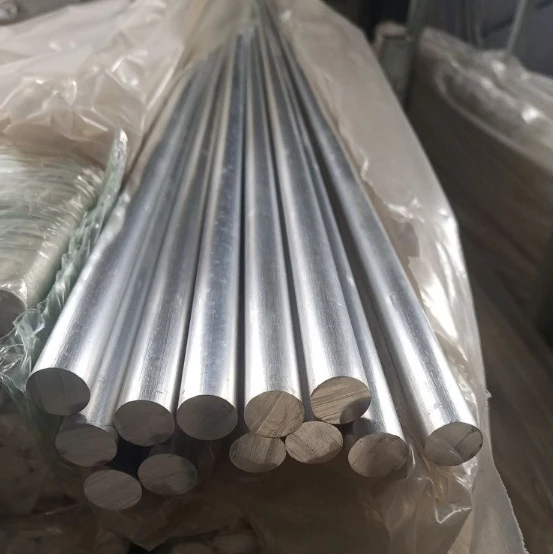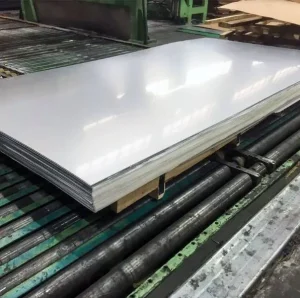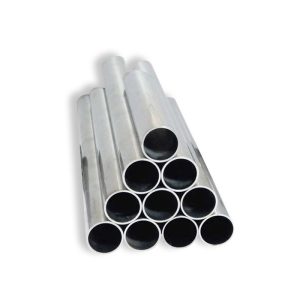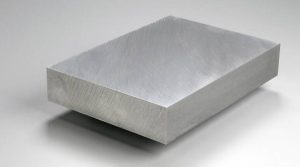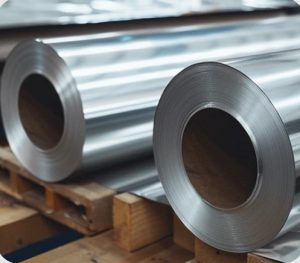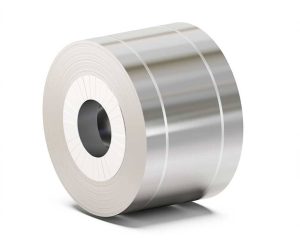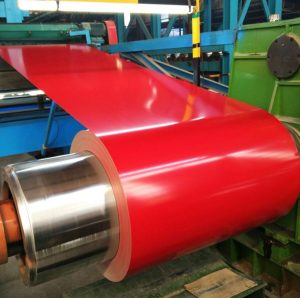Introduction
Aluminum 1100 rod is a highly versatile and widely used material across various industries. Its unique combination of properties makes it an ideal choice for applications requiring excellent corrosion resistance, high thermal and electrical conductivity, and ease of fabrication. In this comprehensive guide, we explore the core characteristics that make Aluminum 1100 rod an exceptional material, compare it with other aluminum alloys, and address common questions to help users make informed decisions.
1. Composition and Material Characteristics
1.1 Chemical Composition
Aluminum 1100 is an commercially pure aluminum alloy, containing at least 99% aluminum. Its composition primarily includes:
| Element | Content (%) | Functionality |
|---|---|---|
| Aluminum (Al) | ≥ 99.0 | Provides high purity, corrosion resistance, and excellent thermal and electrical conductivity |
| Copper | ≤ 0.05 | Minimal influence, maintains ductility |
| Iron | Up to 0.70 | Impacts strength and corrosion resistance |
| Silicon | Up to 0.60 | Affects machinability and surface finish |
| Manganese | Up to 0.05 | Improves strength and corrosion resistance |
The high purity of Aluminum 1100 results in superior corrosion resistance, especially in atmospheric environments, and ensures excellent electrical and thermal conductivities.
1.2 Physical Properties
| Property | Typical Value | Significance |
|---|---|---|
| Density | 2.7 g/cm³ | Lightweight, ideal for weight-sensitive applications |
| Melting Point | 660°C | Suitable for various thermal processes |
| Thermal Conductivity | 237 W/m·K | Efficient heat transfer |
| Electrical Conductivity | 61% IACS | Excellent electrical conduction |
These properties make Aluminum 1100 rod suitable for electrical wiring, heat exchangers, and decorative applications.
2. Mechanical Properties and Workability
2.1 Mechanical Strength
Aluminum 1100 has relatively low tensile strength compared to other alloys, with typical values:
| Property | Typical Value | Notes |
|---|---|---|
| Tensile Strength | 90 MPa | Suitable for applications where high strength is not critical |
| Yield Strength | 35 MPa | Ensures good formability |
2.2 Workability and Fabrication
One of the key advantages of Aluminum 1100 is its excellent workability. It can be easily cut, machined, welded, and formed into complex shapes without cracking or deformation. Its ductility allows for deep drawing and bending, making it ideal for manufacturing processes such as:
- Rolling
- Drawing
- Bending
- Welding
2.3 Comparison with Other Aluminum Alloys
| Alloy Series | Typical Tensile Strength (MPa) | Workability | Corrosion Resistance | Applications |
|---|---|---|---|---|
| 1100 | 90 | Excellent | Excellent | Electrical conductors, decorative items |
| 2024 | 470 | Moderate | Moderate | Structural components |
| 6061 | 310 | Good | Good | Structural, automotive |
Note: Aluminum 1100 has the highest workability and corrosion resistance among common alloys but lower strength.
3. Corrosion Resistance and Environmental Suitability
3.1 Corrosion Resistance
Aluminum 1100’s high purity ensures remarkable resistance to corrosion, especially in atmospheric and marine environments. The formation of a thin, protective aluminum oxide layer prevents further oxidation, making it suitable for outdoor applications.
3.2 Suitability for Different Environments
| Environment | Compatibility | Explanation |
|---|---|---|
| Marine | Excellent | Oxide layer resists saltwater corrosion |
| Industrial | Good | Resists pollutants and acids |
| Food Processing | Excellent | Meets hygiene standards, non-reactive |
3.3 Surface Treatments
While Aluminum 1100 naturally resists corrosion, surface treatments such as anodizing, painting, or coating can further enhance its durability and aesthetic appeal.
4. Thermal and Electrical Conductivity
4.1 Electrical Conductivity
Aluminum 1100 is highly conductive, making it ideal for electrical applications. Its conductivity reaches approximately 61% IACS, which is comparable to copper in some cases.
4.2 Thermal Conductivity
With a thermal conductivity of 237 W/m·K, Aluminum 1100 efficiently transfers heat, making it suitable for heat exchangers, radiators, and cooking utensils.
4.3 Comparative Analysis
| Material | Electrical Conductivity (% IACS) | Thermal Conductivity (W/m·K) |
|---|---|---|
| Aluminum 1100 | 61 | 237 |
| Copper | 100 | 385 |
| Aluminum 6061 | 55 | 167 |
While copper offers higher conductivity, Aluminum 1100 provides a cost-effective and lightweight alternative.
5. Manufacturing and Machining
5.1 Machinability
Aluminum 1100 is renowned for its excellent machinability, which reduces manufacturing costs and time. It can be easily drilled, lathed, milled, and cut with standard tools.
5.2 Welding and Joining
The alloy exhibits good weldability, allowing for various joining techniques such as TIG, MIG, and resistance welding. Proper pre-heating and post-welding treatments ensure strong joints.
5.3 Forming and Bending
Its high ductility enables deep drawing and forming into complex shapes without cracking. This property is beneficial in producing containers, panels, and decorative items.
6. Applications and Industry Uses
6.1 Electrical and Electronics
Due to its high electrical conductivity, Aluminum 1100 is extensively used in electrical wiring, busbars, and electronic components.
6.2 Decorative and Architectural
Its bright finish and corrosion resistance make it ideal for decorative panels, signage, and architectural cladding.
6.3 Food and Beverage Industry
Aluminum 1100’s non-reactive surface complies with food safety standards, making it suitable for cookware, storage tanks, and processing equipment.
6.4 Other Uses
- Heat exchangers
- Reflectors
- Packaging materials
- Automotive parts
Comparative Table: Aluminum 1100 Rod Versus Other Alloys
| Property | Aluminum 1100 | Aluminum 6061 | Aluminum 2024 |
|---|---|---|---|
| Composition | >99% Al | Al-Mg-Si | Al-Cu |
| Tensile Strength | 90 MPa | 310 MPa | 470 MPa |
| Corrosion Resistance | Excellent | Good | Moderate |
| Workability | Excellent | Good | Moderate |
| Conductivity | 61% IACS | 55% IACS | 50% IACS |
| Typical Applications | Electrical, decorative | Structural, automotive | Aerospace, military |
7. Common Questions About Aluminum 1100 Rod
Q1: Why is Aluminum 1100 considered ideal for electrical applications?
Answer: Aluminum 1100’s high electrical conductivity (around 61% IACS) makes it nearly as effective as copper in conducting electricity. Its lightweight nature reduces overall weight in electrical systems, and its excellent corrosion resistance ensures longevity. Additionally, its ease of fabrication allows for efficient manufacturing of wires, busbars, and connectors.
Q2: How does Aluminum 1100 compare to other aluminum alloys in terms of corrosion resistance?
Answer: Aluminum 1100 offers superior corrosion resistance due to its high purity, forming a stable oxide layer that protects against environmental elements. Compared to alloys like 2024 or 6061, which contain alloying elements that may reduce corrosion resistance, 1100 remains the preferred choice for outdoor and marine environments.
Q3: Can Aluminum 1100 be welded easily?
Answer: Yes, Aluminum 1100 has excellent weldability. It responds well to various welding techniques such as TIG, MIG, and resistance welding. Proper pre-heating and post-weld treatments can optimize joint strength and prevent issues like cracking or warping.
Q4: What are the limitations of Aluminum 1100?
Answer: The primary limitation is its relatively low tensile strength and hardness compared to other alloys like 2024 or 6061. This limits its use in high-stress structural applications. Additionally, it has limited heat treatment options, which restricts its strength enhancement.
Q5: Is Aluminum 1100 suitable for food contact applications?
Answer: Yes, Aluminum 1100 is suitable for food contact due to its non-reactive surface and compliance with hygiene standards. It is commonly used for cooking utensils, storage tanks, and food processing equipment.
Q6: How does surface treatment affect Aluminum 1100’s properties?
Answer: Surface treatments like anodizing, painting, or coating can enhance corrosion resistance, improve aesthetic appeal, and provide additional surface hardness. These treatments do not significantly alter the base properties but extend the material’s lifespan and functionality.
Conclusion
Aluminum 1100 rod’s unique combination of high purity, excellent corrosion resistance, superb workability, and good electrical and thermal conductivities make it an ideal choice for a wide range of applications. Its versatility spans from electrical components to decorative items, and its ease of fabrication reduces manufacturing costs. When selecting materials for specific projects, understanding these properties ensures optimal performance and longevity.


